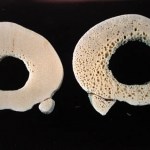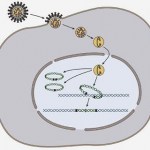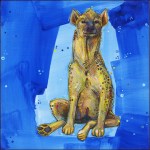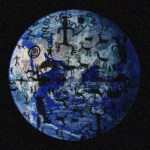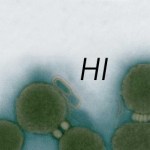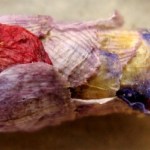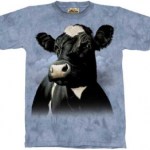Animal
Beagles (Hercules, left, and Tangou, right) genetically-modified to be more muscular. Image from Scientific American, Courtesy of Zou Qingjian and Lai Liangxue at the Guangzhou Institutes of Biomedicine and Health, Chinese Academy of Sciences.
Researchers in China are exploring the use of gene-editing technologies to create customized animals. Take for example research at the Shaanxi Provincial Engineering and Technology Research Center for Shaanbei Cashmere Goats where animals have been genetically-modified to have longer hair (i.e. more wool) and more muscles (i.e. meat). This was…
Enjoy this video of how animals at the Brookfield Zoo celebrated Halloween early this year. Happy Halloween!
Image from the American Physiological Society's website.http://www.the-aps.org/mm/Conferences/APS-Conferences/2014-Conferences/…
As anticipated, the meeting today was excellent! Here are some highlights from today:
Dr. Michael Joyner (Mayo Clinic) spoke about how we should reconsider animal models that are used in research as laboratory rodents can be manipulated to match their genotype to their phenotype. In other words, researchers modify the animal's genome to produce a specific disease or attribute they are interested in studying. The problem with this approach is that genes can be…
Depiction of a retrovirus integrating its DNA into the DNA of the host cell. Image from: http://bit.ly/1phzpbR
I read an interesting article in Scientific American that discussed the so-called Peto's Paradox. Dr. Richard Peto (University of Oxford) came up with the idea that if every cell has an equal probability of becoming cancerous, then larger animals would be predicted to develop cancer at higher rates than smaller animals. As it turns out, it is not that simple. All mammals exhibit similar cancer rates, with some exceptions. This is what came to be known as Peto's Paradox.
Some…
This was too cute not to share. Here is a video of animals in Blank Park Zoo in Iowa performing their version of a Christmas carol.
I came across this neat "name that animal" quiz. How well do you know your animals? Find out now!!
Click here to take the quiz!
A recent article published in The Scientist about the use of robots to study animal behavior is a must-read! I had no idea this was such a seemingly common use of robots. Some researchers use them to mimic the movements of ants along paths of least resistance. While others have developed robots to study cockroaches, rodents, birds, squirrels, frogs, fish, bees, etc. Researchers study the robots in the lab or field to see how well they mimic the real thing or to understand how robotic animals and real animals interact. By studying robots, researchers often learn about the constraints an…
I just watched a neat video describing how animals adapt to their environments to increase survival:
I was just digitally flipping through a new book called "Crime Against Nature", which describes various reproductive behaviors in the animal kingdom. It is written by an artist, Gwenn Seemel, not a scientist, so I cannot vouch for the scientific accuracy of the book as a whole. However, the illustrations are quite nice and the content is seemingly scandalous, which makes for an interesting read.
For example, did you know that male Dayak fruit bats can lactate to feed their young (True according to this article in Nature)?
Image from "Crime Against Nature", written and illustrated by Gwenn…
I know what I'm doing tonight! I just heard about a special called "What Are Animals Thinking" that will be airing tonight on NOVA ScienceNOW. To check local listings, click here.
Watch What Are Animals Thinking? Preview on PBS. See more from NOVA scienceNOW.
I just watched this neat presentation given a few years back by Dr. Robert Sapolsky from Stanford University on the differences and similarities between humans and animals:
...you receive comments from reviewers stating that your "research is interesting, but what does it have to do with people?" Clearly these reviewers have not been reading this blog or they would know that many of the findings in animals have the potential to benefit humans although some findings really are destined to only benefit the animals they are discovered in...and that is okay. Hey, veterinarians need to make a living too.
"Are we to paint what's on the face, what's inside the face, or what's behind it?" -Pablo Picasso
As an animal lover, like others here on scienceblogs, as well as a big fan of Halloween costumes, it's probably unsurprising that a good, creative animal costume will crack me up.
Three more turtle dogs and a giant rat will complete the set!
Turn your sweet, harmless puppy into the fearsome guardian of Hades by adding two extra heads!
Sometimes, you just need to play to your strengths. In this case, it's ridiculous cuteness.
Dressing animals like other animals is practically its own artform…
I've opted to move this blog to my own domain at http://www.isisthescientist.com.
I look forward to seeing some of you there. My sincerest thanks and best wishes to ScienceBlogs. And now, onward...
Let's define alien.
Definition number one: unfamiliar. By that description alone, a good 99% of life on this planet is alien. Breathing water, living nestled in thermal vents, stalking prey on the veldt, growing out of the Earth and eating sunlight, without eyes, without legs, with extra legs, color-blind, carapaced, marsupial, with exoskeletons, with jelly for brains, microbial, in a test tube, growing from spores. Not to mention the extremophiles, those nutty organisms that thrive in hellish environments like boiling acid, liquid asphalt, radioactive waste, and under extreme pressure.
I'…
What do these three quotations have in common? Hint: it lives in a petri dish.
"To live, to err, to fall, to triumph, and to recreate life out of life." -- James Joyce
"What I cannot build, I cannot understand." -- Richard Feynman
"See things not as they are, but as they might be." -- from American Prometheus, a biography of the nuclear physicist Robert Oppenheimer
Although James Joyce could never have imagined it, his words -- and those of Feynman and Oppenheimer, too -- are no longer relegated to library stacks, but instead live on inside an unlikely host: the world's first synthetic…
NPR reports on the discovery of a bee that builds tiny, multi-coloured nests out of flower petals. The rare solitary bee Osmia avoseta creates the cocoons out of a mixture of mud, flower petals and nectar. Each case holds a single egg.
The discovery by a group of scientists in Turkey co-incided with that of another team in Iran; the two groups published their findings together in the American Museum Novitae. More pictures and info on NPR.org.
I don't have the attention span to write this article.
In the course of penning this introductory paragraph, I've taken umpteen email breaks, gotten distracted by several Wikipedia wormholes, and taken an hour's time out to watch Frontline documentary clips on YouTube. It has taken me, in toto, seven days to write a five-paragraph article about my generation's decreasing attention span. At least the irony isn't lost on me.
A social researcher tracking my movements across the web might discover that, in the words of University College of London professor and director of CIBER (the Centre…
Straight from Katie and Andrew's closets we bring you this Mountain Dew-soaked photographic essay.
An explosive herbivore bursts forth from your chest
So many, many more below the fold...
Oh my sternum? Yes, it's real bear
Spirit of the Casino
A rare candid glimpse into pre-Columbian North America
We count four offensive things in this shirt. How many can you find?
Seizure inducing dolphins
T-Rexes fight on the moon
One of Buckminster Fuller's most interesting conceits was his dislike of specialization, which he likened to a kind of intellectual prison, restraining "bright" people from truly understanding the complex, and general, systems of which they were a part. After all, he argued, what causes extinction in the animal kingdom? Overspecialization. Of course, it's logical, and it's s problem we see over and over again in human history, from the Industrial Revolution displacing specialized factory workers to the often daunting gap of comprehension between the social and "hard" sciences. As soon as we…
